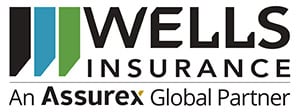The Concerning Commercial Auto Predictions

For the past decade, the commercial auto space has been challenging and largely unprofitable for insurance carriers.
According to a recent report from AM Best, the commercial auto insurance segment’s underwriting losses reached $4 billion in 2019—the worst loss the industry has seen in 10 years. Various factors have led to this poor underwriting performance, including litigation trends, a wide range of driver safety failures, medical treatment inflation, distracted driving, surging accident expenses and a deteriorating public road infrastructure. In this environment, many commercial auto insurance carriers have elevated premium costs—with some policyholders experiencing double-digit rate increases. Despite rising premiums, as an industry, insurance carriers have not returned an underwriting profit for commercial auto lines in over a decade.
Unfortunately, industry experts predict that this hard market will continue to be a concern in 2021 and beyond. As such, we predict that the majority of businesses with commercial auto exposures—regardless of their industry or vehicle class—will have a more difficult renewal process by way of greater premium rates, lowered capacity and more stringent policy requirements or restrictions. Further, insureds with larger fleets or a poor loss history may experience more significant rate increases.
Commercial Auto Price Prediction:
- Overall: +5% to +25%
Trends to Watch:
- Delivery exposures—Due to the ongoing COVID-19 pandemic, many organizations have adjusted their typical operations to remain open—including extending delivery capabilities or hiring delivery drivers for the first time. For many organizations, these new services represent new commercial auto exposures.
- Driver shortages—According to the American Trucking Associations, approximately 160,000 commercial driver positions will go unfilled in the next decade. As a result, many organizations have had to lower their driver applicant standards to fill open positions. These drivers often have fewer years of experience and shorter driving records. Such factors can make these new employees more likely to be involved in an accident on the road. Driver shortages have also forced some organizations to compete for experienced drivers. What’s more, experienced drivers are often working longer hours. While this may seem like an effective measure, such a practice can greatly increase the risk of employees experiencing driver fatigue, which can elevate accident risks.
- Distracted driving concerns—Distracted driving reduces awareness, decision-making and performance—increasing the likelihood of driver error, near-crashes or crashes. Data from the National Highway Traffic Safety Administration indicates that, every year, up to 391,000 people are injured and 3,450 people are killed in crashes involving distracted drivers. As these incidents have become more prevalent, commercial auto insurance costs have climbed in tandem.
- Additional vehicles on the road—The Department of Transportation (DOT) reports that 286.9 million vehicles were registered in the United States in 2020, up from 284.5 million in 2019. Looking ahead, the DOT estimates that an additional 2.6 million vehicles will be registered in 2021. Industry demand is also on the rise, and drivers are logging more miles to make deliveries and meet employer demands. This means a higher number of drivers will be on the road for longer periods of time, increasing the likelihood of accidents and subsequent commercial auto claims.
- Elevated accident costs— As accidents steadily increase, their associated costs have unfortunately followed suit. First, the steep monetary value of technological advancements in commercial vehicles (e.g., blind-spot cameras, backup alarms, GPS devices and telematics software) has elevated vehicle repair costs in the event of an accident. In fact, according to a report from AAA, vehicles equipped with driver assistance systems often cost twice as much to repair as those that aren’t. Second, medical expenses have risen over the past number of years. This is because injuries from accidents often require multiple doctor visits or even surgery, which can extend recovery time and influence overall medical costs.
- Nuclear verdicts—Settlement verdicts for bodily injury claims have been rising steadily. Specifically, nuclear verdicts—which refer to jury awards in which the penalties exceed $10 million—have become increasingly prevalent. As a result, attorneys are more inclined to go to trial. This extends litigation and significantly raises the cost to defend a claim.
Tips for Insurance Buyers:
- Examine your loss control practices relative to your fleet and drivers. Enhance your driver safety programs by implementing or modifying policies on safe driving and distracted driving.
- Design your driver training programs to fit your needs and the exposures facing your business. Regularly retrain drivers on safe driving techniques.
- Establish adequate driving schedules to reduce driver fatigue. Educate employees on driver fatigue and encourage them to take a break if they start experiencing symptoms behind the wheel.
- If you have just begun offering delivery services or recently hired new delivery drivers due to the pandemic, fully assess the risks associated with these changes and implement measures to minimize potential damages (e.g., driver training programs and safe delivery protocols).
- Ensure you are hiring qualified drivers by using motor vehicle records (MVRs) to vet a driver’s past experience and moving violations. Disqualify drivers with an unacceptable driving record. Review MVRs on a regular basis to ensure that drivers maintain good driving records. Define the number and types of violations a driver can have before they lose their driving privileges.
- Consider technology solutions, such as telematics, where appropriate to strengthen and supplement other loss control measures.
- Implement a driver- or employee-retention program to maintain experienced drivers.
- Prioritize organizational accident prevention initiatives and establish effective post-accident investigation protocols to prevent future collisions on the road.
- Examine your Federal Motor Carrier Safety Administration BASIC scores to identify gaps in your fleet management programs, if applicable.
- Determine whether you should make structural changes to your commercial auto policies by speaking with your insurance broker.
For a more detailed look at 2021 predictions for commercial auto and other parts of the insurance market, check out this link:
https://www.wellsins.com/wp-content/uploads/2021/03/PC-Market-Outlook-2021.pdf
Content copyright Zywave 2021


